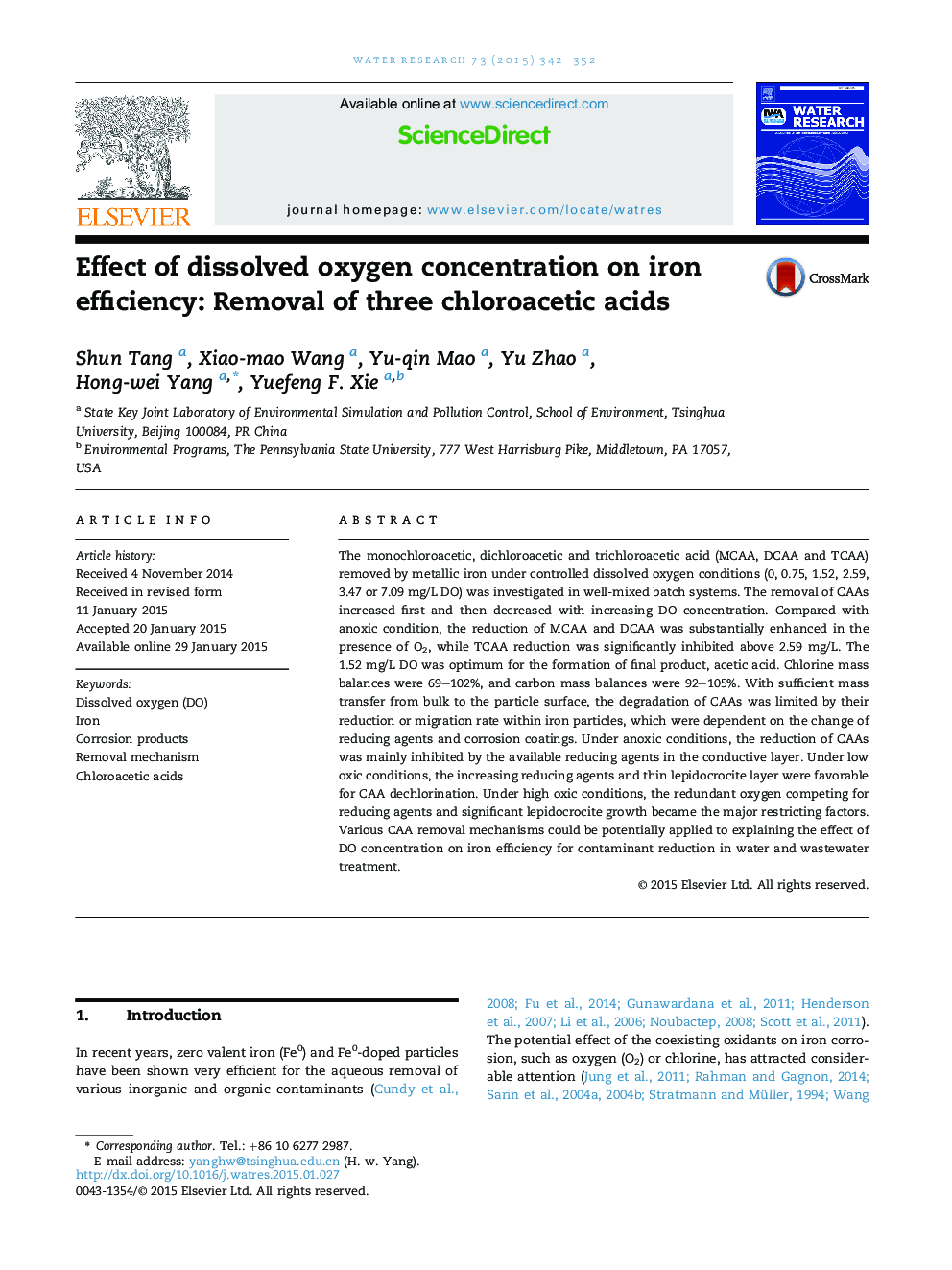| کد مقاله | کد نشریه | سال انتشار | مقاله انگلیسی | نسخه تمام متن |
|---|---|---|---|---|
| 4481252 | 1623095 | 2015 | 11 صفحه PDF | دانلود رایگان |
• The removal of CAAs by iron increased first and then decreased with increasing DO concentration from 0 to 7.09 mg/L.
• The maximum AA formation during three CAA degradations was obtained at 1.52 mg/L DO.
• Two structures of iron corrosion coatings were proposed to explain CAA removal mechanism under anoxic and oxic conditions.
The monochloroacetic, dichloroacetic and trichloroacetic acid (MCAA, DCAA and TCAA) removed by metallic iron under controlled dissolved oxygen conditions (0, 0.75, 1.52, 2.59, 3.47 or 7.09 mg/L DO) was investigated in well-mixed batch systems. The removal of CAAs increased first and then decreased with increasing DO concentration. Compared with anoxic condition, the reduction of MCAA and DCAA was substantially enhanced in the presence of O2, while TCAA reduction was significantly inhibited above 2.59 mg/L. The 1.52 mg/L DO was optimum for the formation of final product, acetic acid. Chlorine mass balances were 69–102%, and carbon mass balances were 92–105%. With sufficient mass transfer from bulk to the particle surface, the degradation of CAAs was limited by their reduction or migration rate within iron particles, which were dependent on the change of reducing agents and corrosion coatings. Under anoxic conditions, the reduction of CAAs was mainly inhibited by the available reducing agents in the conductive layer. Under low oxic conditions, the increasing reducing agents and thin lepidocrocite layer were favorable for CAA dechlorination. Under high oxic conditions, the redundant oxygen competing for reducing agents and significant lepidocrocite growth became the major restricting factors. Various CAA removal mechanisms could be potentially applied to explaining the effect of DO concentration on iron efficiency for contaminant reduction in water and wastewater treatment.
Figure optionsDownload high-quality image (156 K)Download as PowerPoint slide
Journal: Water Research - Volume 73, 15 April 2015, Pages 342–352
